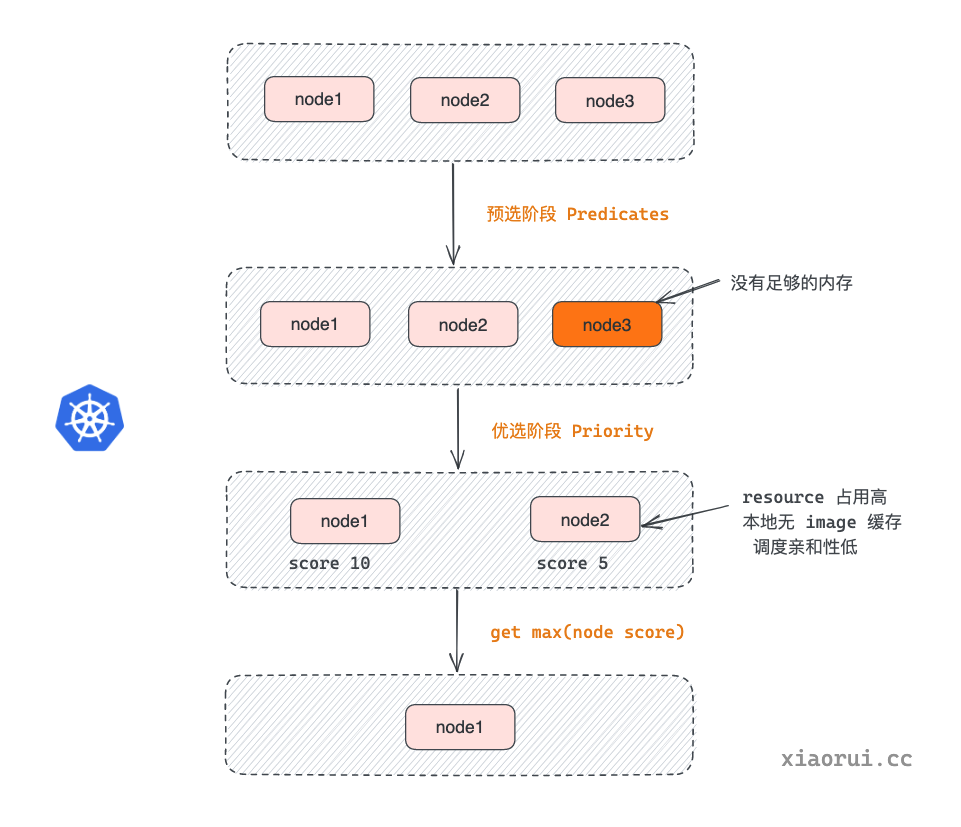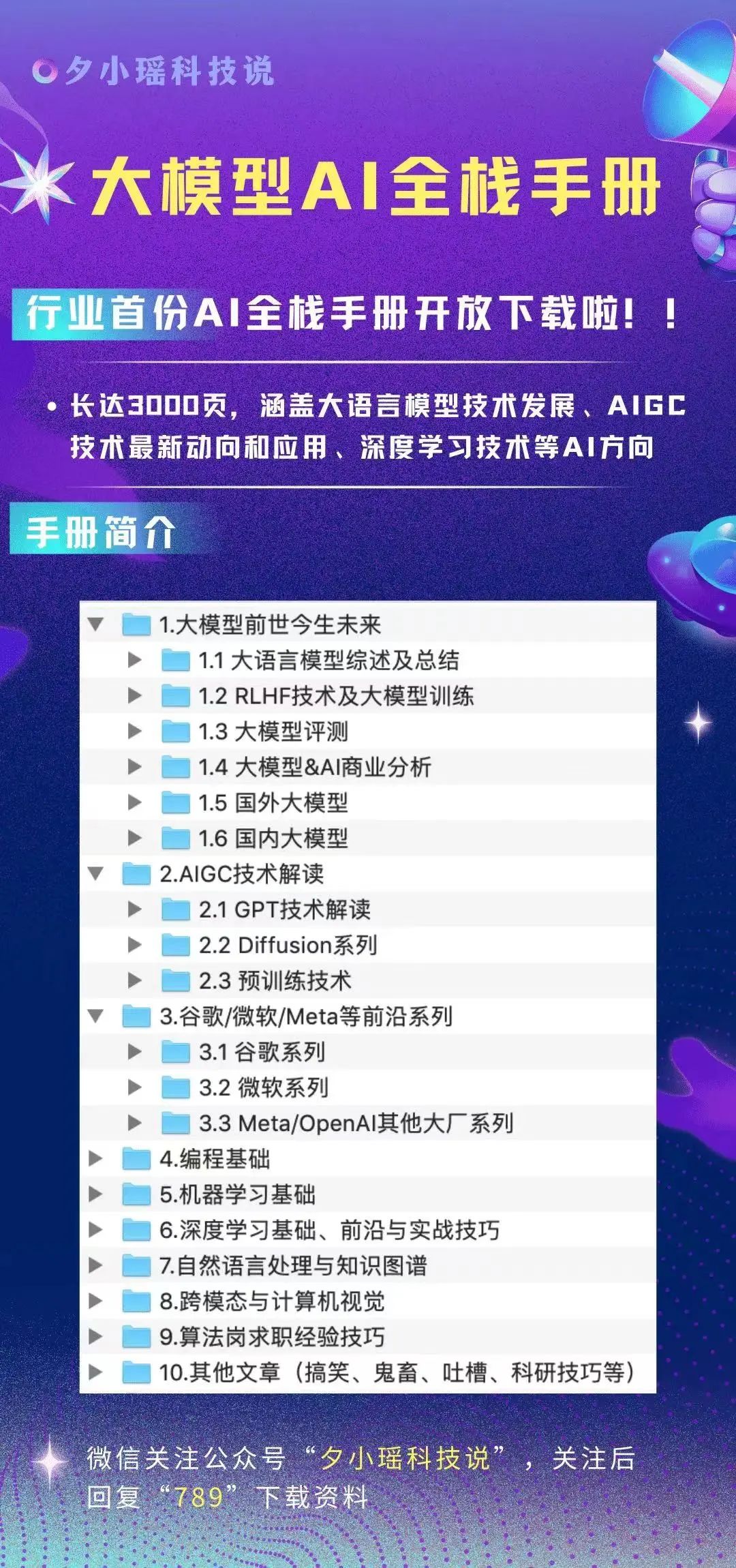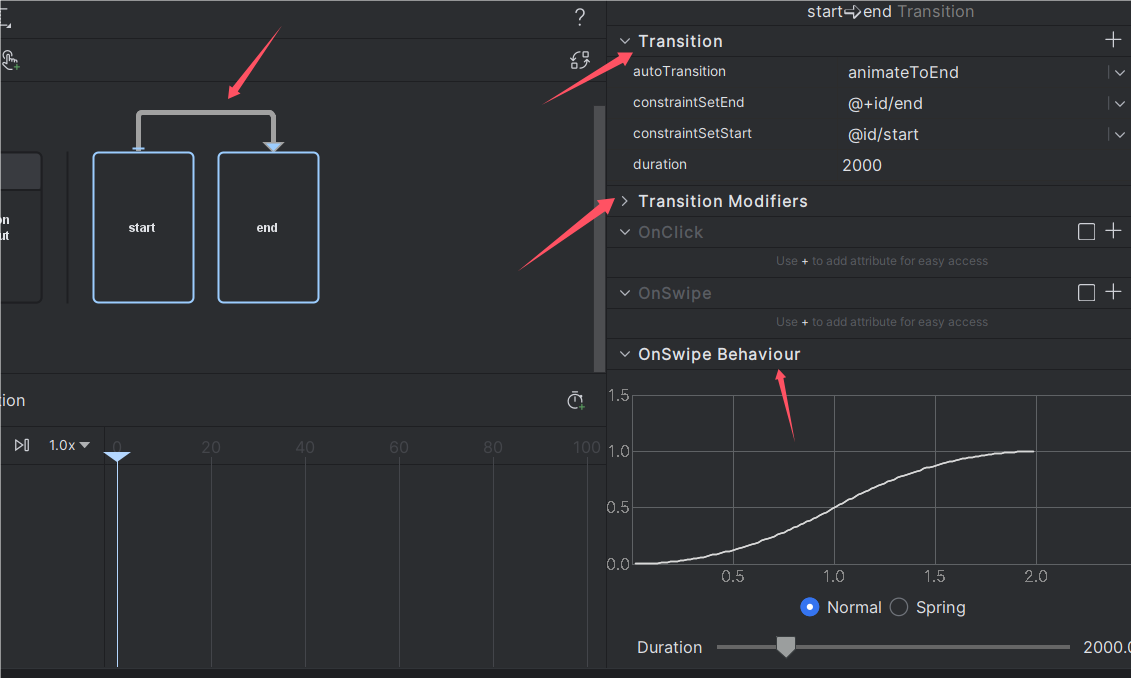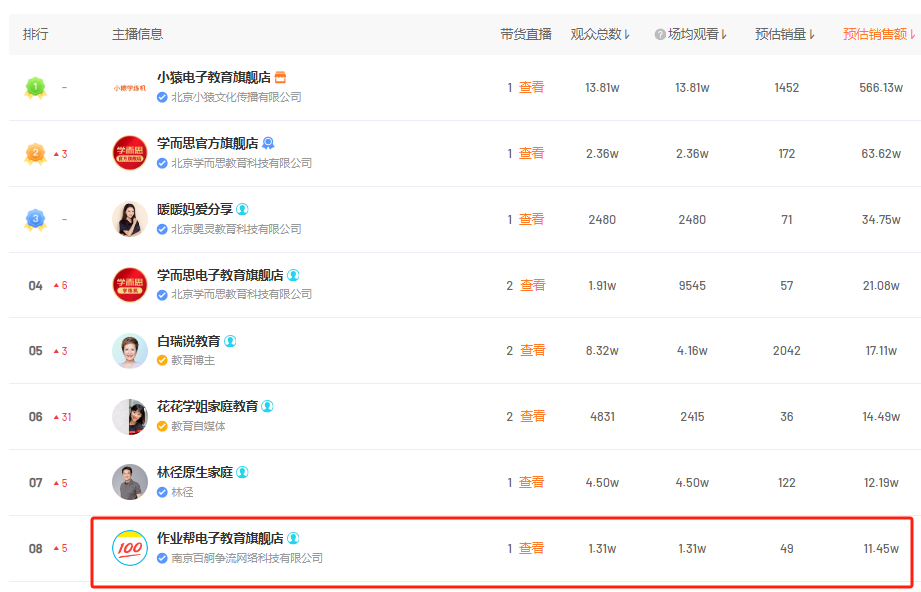概述
摘要: 上文我们对Kube-scheduler的启动流程进行了分析,本文继续探究kube-scheduler执行pod的调度任务的过程。
正文
说明:基于 kubernetes
v1.12.0源码分析
上文讲到kube-scheduler组件通过sched.Run() 启动调度器实例。在sched.Run() 中循环的执行sched.scheduleOne获取一个pod,并执行Pod的调度任务。
源码位置k8s.io/kubernetes/cmd/kube-scheduler/scheduler.go
// Run begins watching and scheduling. It waits for cache to be synced, then starts a goroutine and returns immediately.
func (sched *Scheduler) Run() {if !sched.config.WaitForCacheSync() {return}// 启动协程循环的执行调度任务go wait.Until(sched.scheduleOne, 0, sched.config.StopEverything)
}
(sched *Scheduler) scheduleOne
继续探究scheduleOne函数,scheduleOne函数非常关键。函数的第一步就是 getNextPod() 从调度队列podQueue中取出一个待调度 pod
// scheduleOne does the entire scheduling workflow for a single pod. It is serialized on the scheduling algorithm's host fitting.
func (sched *Scheduler) scheduleOne() {// 从调度队列podQueue中取出一个待调度 podpod := sched.config.NextPod()if pod.DeletionTimestamp != nil {sched.config.Recorder.Eventf(pod, v1.EventTypeWarning, "FailedScheduling", "skip schedule deleting pod: %v/%v", pod.Namespace, pod.Name)glog.V(3).Infof("Skip schedule deleting pod: %v/%v", pod.Namespace, pod.Name)return}glog.V(3).Infof("Attempting to schedule pod: %v/%v", pod.Namespace, pod.Name)// Synchronously attempt to find a fit for the pod.start := time.Now()suggestedHost, err := sched.schedule(pod)if err != nil {// schedule() may have failed because the pod would not fit on any host, so we try to// preempt, with the expectation that the next time the pod is tried for scheduling it// will fit due to the preemption. It is also possible that a different pod will schedule// into the resources that were preempted, but this is harmless.if fitError, ok := err.(*core.FitError); ok {preemptionStartTime := time.Now()sched.preempt(pod, fitError)metrics.PreemptionAttempts.Inc()metrics.SchedulingAlgorithmPremptionEvaluationDuration.Observe(metrics.SinceInMicroseconds(preemptionStartTime))metrics.SchedulingLatency.WithLabelValues(metrics.PreemptionEvaluation).Observe(metrics.SinceInSeconds(preemptionStartTime))}return}metrics.SchedulingAlgorithmLatency.Observe(metrics.SinceInMicroseconds(start))// Tell the cache to assume that a pod now is running on a given node, even though it hasn't been bound yet.// This allows us to keep scheduling without waiting on binding to occur.assumedPod := pod.DeepCopy()// Assume volumes first before assuming the pod.//// If all volumes are completely bound, then allBound is true and binding will be skipped.//// Otherwise, binding of volumes is started after the pod is assumed, but before pod binding.//// This function modifies 'assumedPod' if volume binding is required.allBound, err := sched.assumeVolumes(assumedPod, suggestedHost)if err != nil {return}// assume modifies `assumedPod` by setting NodeName=suggestedHosterr = sched.assume(assumedPod, suggestedHost)if err != nil {return}// bind the pod to its host asynchronously (we can do this b/c of the assumption step above).go func() {// Bind volumes first before Podif !allBound {err = sched.bindVolumes(assumedPod)if err != nil {return}}err := sched.bind(assumedPod, &v1.Binding{ObjectMeta: metav1.ObjectMeta{Namespace: assumedPod.Namespace, Name: assumedPod.Name, UID: assumedPod.UID},Target: v1.ObjectReference{Kind: "Node",Name: suggestedHost,},})metrics.E2eSchedulingLatency.Observe(metrics.SinceInMicroseconds(start))if err != nil {glog.Errorf("Internal error binding pod: (%v)", err)}}()
}scheduleOne函数较长我们提炼出关键步骤:
sched.config.NextPod()从调度队列podQueue中取出一个待调度 podsched.schedule(pod)执行对pod的调度任务,调度完成会返回一个合适的host(suggestedHost)sched.bind执行 bind ,即将 pod 绑定到 node,并发送post请求给apiserver
// scheduleOne does the entire scheduling workflow for a single pod. It is serialized on the scheduling algorithm's host fitting.
func (sched *Scheduler) scheduleOne() {// 从调度队列podQueue中取出一个待调度 podpod := sched.config.NextPod()// 执行pod的调度任务,调度完成会返回一个合适的hostsuggestedHost, err := sched.schedule(pod)// bind the pod to its host asynchronously (we can do this b/c of the assumption step above).go func() {// 执行 bind ,将 pod 绑定到 nodeerr := sched.bind(assumedPod, &v1.Binding{}()
}接下来,我们分别对获取待调度pod、执行pod调度任务、pod的绑定详细探究
源码如何实现调度任务
(sched *Scheduler) schedule
(sched *Scheduler) schedule 的作用是给定一个待调度pod,利用调度算法,返回一个合适的Host。函数内部直接执行调度任务的是sched.config.Algorithm.Schedule.
// schedule implements the scheduling algorithm and returns the suggested host.
func (sched *Scheduler) schedule(pod *v1.Pod) (string, error) {// 给定一个pod 和 一个NodeLister,返回一个合适的hosthost, err := sched.config.Algorithm.Schedule(pod, sched.config.NodeLister)if err != nil {pod = pod.DeepCopy()sched.config.Error(pod, err)sched.config.Recorder.Eventf(pod, v1.EventTypeWarning, "FailedScheduling", "%v", err)sched.config.PodConditionUpdater.Update(pod, &v1.PodCondition{Type: v1.PodScheduled,Status: v1.ConditionFalse,LastProbeTime: metav1.Now(),Reason: v1.PodReasonUnschedulable,Message: err.Error(),})return "", err}return host, err
}
(g *genericScheduler) Schedule
sched.config.Algorithm.Schedule 是一个接口,具体实现是genericScheduler结构的Schedule()方法。

找到genericScheduler结构体的Schedule()方法的源码
// Schedule tries to schedule the given pod to one of the nodes in the node list.
// If it succeeds, it will return the name of the node.
// If it fails, it will return a FitError error with reasons.
func (g *genericScheduler) Schedule(pod *v1.Pod, nodeLister algorithm.NodeLister) (string, error) {trace := utiltrace.New(fmt.Sprintf("Scheduling %s/%s", pod.Namespace, pod.Name))defer trace.LogIfLong(100 * time.Millisecond)// 执行一些检查工作if err := podPassesBasicChecks(pod, g.pvcLister); err != nil {return "", err}// 获取 所有node信息nodes, err := nodeLister.List()if err != nil {return "", err}if len(nodes) == 0 {return "", ErrNoNodesAvailable}// Used for all fit and priority funcs.// 更新缓存中Node信息err = g.cache.UpdateNodeNameToInfoMap(g.cachedNodeInfoMap)if err != nil {return "", err}trace.Step("Computing predicates")// findNodesThatFit 执行预选算法,过滤出符合的node节点startPredicateEvalTime := time.Now()filteredNodes, failedPredicateMap, err := g.findNodesThatFit(pod, nodes)if err != nil {return "", err}if len(filteredNodes) == 0 {return "", &FitError{Pod: pod,NumAllNodes: len(nodes),FailedPredicates: failedPredicateMap,}}// 记录数据用于promethues监控采集metrics.SchedulingAlgorithmPredicateEvaluationDuration.Observe(metrics.SinceInMicroseconds(startPredicateEvalTime))metrics.SchedulingLatency.WithLabelValues(metrics.PredicateEvaluation).Observe(metrics.SinceInSeconds(startPredicateEvalTime))trace.Step("Prioritizing")// 接下来将执行优选算法(打分),选出最优nodestartPriorityEvalTime := time.Now()// When only one node after predicate, just use it.// 如果最优的节点只有一个,就直接返回该节点if len(filteredNodes) == 1 {metrics.SchedulingAlgorithmPriorityEvaluationDuration.Observe(metrics.SinceInMicroseconds(startPriorityEvalTime))return filteredNodes[0].Name, nil}metaPrioritiesInterface := g.priorityMetaProducer(pod, g.cachedNodeInfoMap)// PrioritizeNodes 执行优选算法(打分),选出最优的nodepriorityList, err := PrioritizeNodes(pod, g.cachedNodeInfoMap, metaPrioritiesInterface, g.prioritizers, filteredNodes, g.extenders)if err != nil {return "", err}metrics.SchedulingAlgorithmPriorityEvaluationDuration.Observe(metrics.SinceInMicroseconds(startPriorityEvalTime))metrics.SchedulingLatency.WithLabelValues(metrics.PriorityEvaluation).Observe(metrics.SinceInSeconds(startPriorityEvalTime))trace.Step("Selecting host")// selectHost 从最优的node列表中选出,最优的一个node节点return g.selectHost(priorityList)
}代码较长,老规矩我们提炼出精华。(g *genericScheduler) Schedule的工作主要有3点:
g.findNodesThatFit(pod, nodes)从nodes列表中过滤出适合pod调度的node列表,即所谓的“预选”。PrioritizeNodes对node列表中的node执行"打分",选出分数最高的node列表(因为可能出现一些node的分数最高且相同,所以返回的是多个node的列表),即所谓的"“优选”。- .
selectHost(priorityList)从最优列表中选出一个最最最合适的node节点。
// Schedule tries to schedule the given pod to one of the nodes in the node list.
// If it succeeds, it will return the name of the node.
// If it fails, it will return a FitError error with reasons.
func (g *genericScheduler) Schedule(pod *v1.Pod, nodeLister algorithm.NodeLister) (string, error) {// 1. 获取所有node信息nodes, err := nodeLister.List()// 2. findNodesThatFit 执行预选算法,过滤出符合的node节点filteredNodes, failedPredicateMap, err := g.findNodesThatFit(pod, nodes)// When only one node after predicate, just use it.// 2.1 如果最优的节点只有一个,就直接返回该节点if len(filteredNodes) == 1 { return filteredNodes[0].Name, nil}// 3. PrioritizeNodes 执行优选算法(打分),选出最优的nodepriorityList, err := PrioritizeNodes(pod, g.cachedNodeInfoMap, metaPrioritiesInterface, g.prioritizers, filteredNodes, g.extenders)// 4. selectHost 从最优的node列表中选出,最优的一个node节点return g.selectHost(priorityList)
}
g.findNodesThatFit和PrioritizeNodes 内容较多后面写一个文章单独分析。
(g *genericScheduler) Schedule的执行流程如图所示

(图片来自网络,如有侵权,请联系作者删除)
(g *genericScheduler) selectHost
柿子挑软的捏。selectHost逻辑最简单,所以先分析它。 selectHost的任务是从优选列表中选出``一个最优node,注意如果有多个node最大且分数一样时,会通过索引累计方式,避免多次调度到同一个宿主`。
// selectHost takes a prioritized list of nodes and then picks one
// in a round-robin manner from the nodes that had the highest score.
func (g *genericScheduler) selectHost(priorityList schedulerapi.HostPriorityList) (string, error) {if len(priorityList) == 0 {return "", fmt.Errorf("empty priorityList")}// findMaxScores 从 priorityList 计算出最大分数的一个或多个 node 的索引maxScores := findMaxScores(priorityList)// 重要!!!通过索引累计方式,避免多次调度到同一个宿主ix := int(g.lastNodeIndex % uint64(len(maxScores)))g.lastNodeIndex++return priorityList[maxScores[ix]].Host, nil
}
findMaxScores
findMaxScores 对 priorityList 遍历,找出分数最大node的索引并放入一个列表,如果最大分数有相同的,就都会放入列表。
// findMaxScores returns the indexes of nodes in the "priorityList" that has the highest "Score".
func findMaxScores(priorityList schedulerapi.HostPriorityList) []int {maxScoreIndexes := make([]int, 0, len(priorityList)/2)maxScore := priorityList[0].Scorefor i, hp := range priorityList {if hp.Score > maxScore {maxScore = hp.Score// 如果 node 的 score大于 maxScore就把所有放入列表 maxScoreIndexesmaxScoreIndexes = maxScoreIndexes[:0]maxScoreIndexes = append(maxScoreIndexes, i)} else if hp.Score == maxScore {maxScoreIndexes = append(maxScoreIndexes, i)}}return maxScoreIndexes
}
源码如何实现从调度队列中获取待调度pod
schduleOne函数执行的第一步sched.config.NextPod(),作用是从调度队列podQueue中取出一个待调度pod。那么问题来了,podQueue是如何初始化的呢?是如何将数据放到队列里面去的呢?
我们先将视线回到server.go中的run()函数,会执行NewSchedulerConfig(c) 获取调度配置。
Run
// Run runs the Scheduler.
func Run(c schedulerserverconfig.CompletedConfig, stopCh <-chan struct{}) error {// 代码省略// Build a scheduler config from the provided algorithm source.schedulerConfig, err := NewSchedulerConfig(c)if err != nil {return err}// 代码省略
}
NewSchedulerConfig
NewSchedulerConfig 调用了 CreateFromProvider 函数。进一步查找 CreateFromProvider 函数
// NewSchedulerConfig creates the scheduler configuration. This is exposed for use by tests.
func NewSchedulerConfig(s schedulerserverconfig.CompletedConfig) (*scheduler.Config, error) {// 代码省略source := s.ComponentConfig.AlgorithmSourcevar config *scheduler.Configswitch {case source.Provider != nil:// Create the config from a named algorithm provider.sc, err := configurator.CreateFromProvider(*source.Provider)if err != nil {return nil, fmt.Errorf("couldn't create scheduler using provider %q: %v", *source.Provider, err)}config = sc// 代码省略
}
(c *configFactory) CreateFromProvider
CreateFromProvider 调用了 CreateFromKeys 函数
// Creates a scheduler from the name of a registered algorithm provider.
func (c *configFactory) CreateFromProvider(providerName string) (*scheduler.Config, error) {glog.V(2).Infof("Creating scheduler from algorithm provider '%v'", providerName)provider, err := GetAlgorithmProvider(providerName)if err != nil {return nil, err}// 注意return c.CreateFromKeys(provider.FitPredicateKeys, provider.PriorityFunctionKeys, []algorithm.SchedulerExtender{})
}(c *configFactory) CreateFromKeys
源码位置kubernetes/pkg/scheduler/factory/factory.go
在CreateFromKeys函数中终于找到NextPod的定义,我们继续查找c.getNextPod()
// Creates a scheduler from a set of registered fit predicate keys and priority keys.
func (c *configFactory) CreateFromKeys(predicateKeys, priorityKeys sets.String, extenders []algorithm.SchedulerExtender) (*scheduler.Config, error) {glog.V(2).Infof("Creating scheduler with fit predicates '%v' and priority functions '%v'", predicateKeys, priorityKeys)if c.GetHardPodAffinitySymmetricWeight() < 1 || c.GetHardPodAffinitySymmetricWeight() > 100 {return nil, fmt.Errorf("invalid hardPodAffinitySymmetricWeight: %d, must be in the range 1-100", c.GetHardPodAffinitySymmetricWeight())}predicateFuncs, err := c.GetPredicates(predicateKeys)if err != nil {return nil, err}priorityConfigs, err := c.GetPriorityFunctionConfigs(priorityKeys)if err != nil {return nil, err}priorityMetaProducer, err := c.GetPriorityMetadataProducer()if err != nil {return nil, err}predicateMetaProducer, err := c.GetPredicateMetadataProducer()if err != nil {return nil, err}// Init equivalence class cacheif c.enableEquivalenceClassCache {c.equivalencePodCache = equivalence.NewCache()glog.Info("Created equivalence class cache")}// 重要!!! 创建通用调度器algo := core.NewGenericScheduler(c.schedulerCache,c.equivalencePodCache,c.podQueue,predicateFuncs,predicateMetaProducer,priorityConfigs,priorityMetaProducer,extenders,c.volumeBinder,c.pVCLister,c.alwaysCheckAllPredicates,c.disablePreemption,c.percentageOfNodesToScore,)podBackoff := util.CreateDefaultPodBackoff()return &scheduler.Config{SchedulerCache: c.schedulerCache,Ecache: c.equivalencePodCache,// The scheduler only needs to consider schedulable nodes.NodeLister: &nodeLister{c.nodeLister},Algorithm: algo,GetBinder: c.getBinderFunc(extenders),PodConditionUpdater: &podConditionUpdater{c.client},PodPreemptor: &podPreemptor{c.client},WaitForCacheSync: func() bool {return cache.WaitForCacheSync(c.StopEverything, c.scheduledPodsHasSynced)},// 重要!!!从调度队列中取出一个 待调度 podNextPod: func() *v1.Pod {return c.getNextPod()},Error: c.MakeDefaultErrorFunc(podBackoff, c.podQueue),StopEverything: c.StopEverything,VolumeBinder: c.volumeBinder,// 定义调度队列SchedulingQueue: c.podQueue,}, nil
}
getNextPod() 的逻辑很简单,就是从调度队列podQueue中Pop()出一个待调度的pod。podQueue是一个优先级队列,如果待调度pod在spec中配置了优先级,pop()会弹出优先级高的pod执行调度任务。
func (c *configFactory) getNextPod() *v1.Pod {// 从调度队列从弹出一个待调度的podpod, err := c.podQueue.Pop()if err == nil {glog.V(4).Infof("About to try and schedule pod %v/%v", pod.Namespace, pod.Name)return pod}glog.Errorf("Error while retrieving next pod from scheduling queue: %v", err)return nil
}
到此,我们明白了,shed.run()启动s时会启动informer,informer中定义了pod事件handler回调函数,handler会将待调度的pod放入调度队列podQueue。 而消费调度队列里面的pod,则是sheduleOne方法通过c.podQueue.Pop()取出一个待调度pod。
源码如何实现bind操作
scheduleOne选出一个 node 之后,调度器会创建一个v1.Binding 对象, Pod 的 ObjectReference 字段的值就是选中的 suggestedHost 的名字。
下面代码片段是scheduleOne中关于bind操作的内容
// 构建一个 v1.Binding 对象
err := sched.bind(assumedPod, &v1.Binding{ObjectMeta: metav1.ObjectMeta{Namespace: assumedPod.Namespace, Name: assumedPod.Name, UID: assumedPod.UID},Target: v1.ObjectReference{Kind: "Node",Name: suggestedHost,},})
v1.Binding资源类型的介绍
v1.Binding 是 Kubernetes API 的一个对象类型,用于将一个或多个 Pod 绑定到一个特定的节点上。为了将 Pod 绑定到特定的节点上,可以使用 v1.Binding 对象。该对象需要指定 Pod 的名称和命名空间,以及要绑定到的节点名称。
(b *binder) Bind 代码很多,但核心的就一行:
err := sched.config.GetBinder(assumed).Bind(b)
调用Binder接口的Bind方法。进一可以看到,Bind方法 是利用clientset向apiserver发起一个Bind的POST请求
// bind binds a pod to a given node defined in a binding object. We expect this to run asynchronously, so we
// handle binding metrics internally.
func (sched *Scheduler) bind(assumed *v1.Pod, b *v1.Binding) error {bindingStart := time.Now()// If binding succeeded then PodScheduled condition will be updated in apiserver so that// it's atomic with setting host.// 调用Binder接口的Bind方法err := sched.config.GetBinder(assumed).Bind(b)// 检查cache中对应pod的状态,确认是否bind成功if err := sched.config.SchedulerCache.FinishBinding(assumed); err != nil {glog.Errorf("scheduler cache FinishBinding failed: %v", err)}// 如果没有bind绑定成功,则记录错误原因if err != nil {glog.V(1).Infof("Failed to bind pod: %v/%v", assumed.Namespace, assumed.Name)if err := sched.config.SchedulerCache.ForgetPod(assumed); err != nil {glog.Errorf("scheduler cache ForgetPod failed: %v", err)}sched.config.Error(assumed, err)sched.config.Recorder.Eventf(assumed, v1.EventTypeWarning, "FailedScheduling", "Binding rejected: %v", err)sched.config.PodConditionUpdater.Update(assumed, &v1.PodCondition{Type: v1.PodScheduled,Status: v1.ConditionFalse,LastProbeTime: metav1.Now(),Reason: "BindingRejected",})return err}// 记录metrics监控数据metrics.BindingLatency.Observe(metrics.SinceInMicroseconds(bindingStart))metrics.SchedulingLatency.WithLabelValues(metrics.Binding).Observe(metrics.SinceInSeconds(bindingStart))sched.config.Recorder.Eventf(assumed, v1.EventTypeNormal, "Scheduled", "Successfully assigned %v/%v to %v", assumed.Namespace, assumed.Name, b.Target.Name)return nil
}
Bind 是调用了clientset向apiserver发起一个Bind的POST请求
// Bind just does a POST binding RPC.
func (b *binder) Bind(binding *v1.Binding) error {glog.V(3).Infof("Attempting to bind %v to %v", binding.Name, binding.Target.Name)// 通过clientset向apiserver发起一个Bind的POST请求return b.Client.CoreV1().Pods(binding.Namespace).Bind(binding)
}
补充内容: apiserver收到bind请求后
当apiserver 收到这个 Binding object 请求后,将会更新 Pod 对象的下列字段:
设置 pod.Spec.NodeName
添加 annotations
设置 PodScheduled status 为 True
// k8s.io/kubernetes/pkg/registry/core/pod/storage/storage.go// assignPod assigns the given pod to the given machine.
// 处理 api 收到到binding RESTful 请求
func (r *BindingREST) assignPod(ctx context.Context, podID string, machine string, annotations map[string]string, dryRun bool) (err error) {// 设置pod的 host 和 Annotation 信息if _, err = r.setPodHostAndAnnotations(ctx, podID, "", machine, annotations, dryRun); err != nil {err = storeerr.InterpretGetError(err, api.Resource("pods"), podID)err = storeerr.InterpretUpdateError(err, api.Resource("pods"), podID)if _, ok := err.(*errors.StatusError); !ok {err = errors.NewConflict(api.Resource("pods/binding"), podID, err)}}return
}// k8s.io/kubernetes/pkg/registry/core/pod/storage/storage.gofunc (r *BindingREST) setPodHostAndAnnotations(ctx context.Context, podID, oldMachine, machine string,annotations map[string]string, dryRun bool) (finalPod *api.Pod, err error) {podKey := r.store.KeyFunc(ctx, podID)r.store.Storage.GuaranteedUpdate(ctx, podKey, &api.Pod{}, false, nil,storage.SimpleUpdate(func(obj runtime.Object) (runtime.Object, error) {pod, ok := obj.(*api.Pod)// 设置 pod.Spec.NodeName pod.Spec.NodeName = machineif pod.Annotations == nil {pod.Annotations = make(map[string]string)}// 更新 pod 的 annotationsfor k, v := range annotations {pod.Annotations[k] = v}// 设置pod 的 pod.status.conditions中的status值为truezpodutil.UpdatePodCondition(&pod.Status, &api.PodCondition{Type: api.PodScheduled,Status: api.ConditionTrue,})return pod, nil}), dryRun, nil)
}
更新pod.spec.Nodename后,将数据写入到etcd,之后 被指定调度的node节点上的 kubelet监听到这个事件,kubelet接下来会在该机器上创建pod.
总结
经过分析scheduleOne函数会循环的从调度队列sheduling_Queue`,取出pop()待调度的pod, 之后利用`sched.schedule()执行调度任务,选出最佳的sugestHost。 最后sched.bind()通过clientset向apiserver发起绑定bind的POST请求。至此,完成了一个完成的pod调度过程,流程如图所示。



















